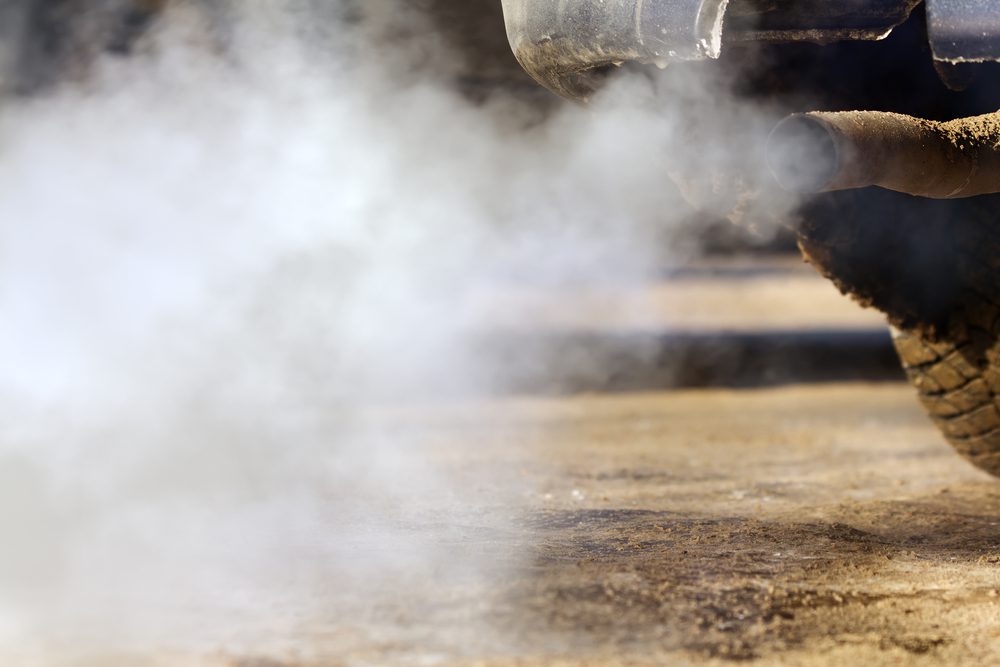Spis treści:
An invention born out of necessity
Before we get into what a DPF differential pressure sensor and particulate filter is, we first need to explain why it’s so important to combat the harmful chemicals created when a car’s engine is running.
Essentially every internal combustion engine emits a variety of substances into the earth’s atmosphere during its operation. This is a consequence of the relatively low efficiency of the fuel combustion process itself, during which the matter is not fully converted into clean energy.
The harmfulness of the emitted chemical compounds affects the environment in different ways – some of them are completely harmless, while others actively contribute to the deterioration of air quality or even cause a global ecological disaster, such as the greenhouse effect. This is why it is so important to try to reduce all undesirable substances.

Combating harmful emissions is a difficult task – the combustion of liquid fuels no longer leaves much room for improvement, and the engines themselves have practically reached their maximum efficiency. Fortunately, there is another way to fight against pollution, and that is to actively clean the emitted exhaust gases. Today, this task is carried out, among others, by exhaust gas recirculation, addition of urea solution during the process of selective catalytic reduction or use of particulate filters, at the heart of which is the DPF differential pressure sensor.
The above-mentioned procedures make it possible to significantly reduce harmful chemical compounds into the atmosphere, thus protecting the natural environment.
What is the DPF differential pressure sensor responsible for?
A diesel particulate filter (DPF), also known as a particulate filter, is a type of special exhaust filtering device. Its task is to remove soot and particulate matter harmful to the environment, which are contained in exhaust fumes emitted by the engine.
The principle of operation of DPF is relatively simple – the residue remaining after the combustion process of diesel fuel goes to a suitably selected filter and passing through it, they settle on the porous walls of the filtering unit. Then, together with an increase in the temperature of gases emitted by the engine the particles are automatically afterburnt, thanks to which the car is able to almost completely eliminate the emission of soot harmful to human health.

However, in order for the filtration to take place properly, an additional sensor is required, which is the DPF differential pressure sensor. As the name suggests, its role is to constantly monitor the pressure difference, which is done by measuring the pressure of exhaust gases before and immediately after the particulate filter. The sensor itself, in turn, is based on a strain gauge – as the pressure increases, so does the electric voltage generated by it.
The evaluation of the filtration efficiency is realised by the vehicle’s engine control unit, which checks the data obtained by the DPF differential pressure sensor. The values obtained by the sensor are also used to estimate the level of filling of the filter. If the DPF differential pressure sensor detects a decrease in the system’s efficiency, it will immediately send an indication to the vehicle’s on-board computer that the particulate filter needs to be auto-recharged or recommend that it be replaced altogether.
What to do if the DPF differential pressure sensor fails?
The DPF system is designed to be a self-healing filtering unit, but for this to be possible, the right conditions must be in place. Thus, the basic issue associated with the operation of vehicles equipped with DPF is the periodic burning of soot that has accumulated in the particulate filter.
If the DPF differential pressure sensor is working properly, the process of burning out the exhaust filter is initiated after sending information to the car’s on-board computer. As a result, a higher dose of fuel is applied and the temperature in the exhaust system and the particulate filter increases significantly, which in turn allows for almost complete combustion of all soot.

Unfortunately, in some cases the filter system fails and needs to be replaced, of which the DPF differential pressure sensor will inform the driver in the form of an error displayed on the dashboard of the vehicle. If, on the other hand, you do not receive an appropriate message and the engine loses power, smokes heavily from the exhaust system or the operation of the engine deviates significantly from the norm, you should go to the mechanics workshop to consult a mechanic and – if the diagnosis indicates so – make a repair.
How useful was this post?
Click on a star to rate it!
Average rating 4.3 / 5. Vote count: 14
No votes so far! Be the first to rate this post.

